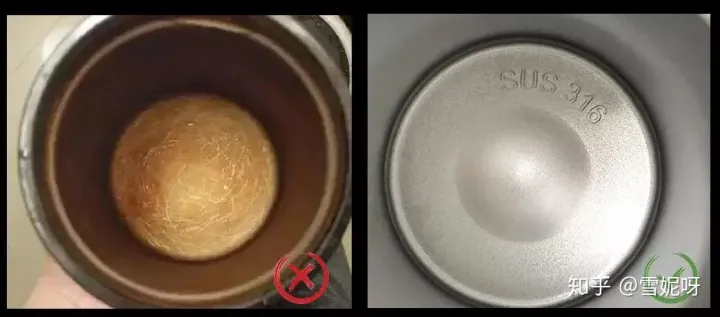I often emphasize to everyone that whether you are a practical party or a beauty party, no matter what the purpose of purchasing a vacuum flask is: the first consideration in purchasing a vacuum flask is always safety and health! !
A batch of inferior thermos cups exposed by CCTV some time ago are actually because of the use of inferior non-national standard 201 stainless steel as 304 stainless steel as the inner part of the thermos cup. This type of stainless steel contains high manganese content, and heavy metals are seriously exceeding the standard. For adults, it will reduce our immunity, cause loss of appetite, diarrhea, etc. For children, it will affect the growth and development of the child’s brain, affect the nervous system, and poor quality. The dangers of thermos cups are evident from this.
Our country requires that the stainless steel material of the thermos cup liner conforms to the implementation standard of GB 4806.9-2016 “National Food Safety Standard for Food Contact Metal Materials and Products”. At present, 304 stainless steel is an internationally recognized food grade (processing and storage) stainless steel, with a relatively high nickel content. High and excellent acid and alkali resistance, it is also one of the most commonly used materials for vacuum flasks..

At present, 316 stainless steel is often used as a selling point on the market. It is a medical grade stainless steel with 2% molybdenum added on the basis of 304. It has stronger oxidation resistance and high temperature resistance, and does not have thermal expansion and contraction. , the properties are comprehensively increased, so it is often used to make precision parts.
So since 304 can be used to make high-quality thermos cups, why does 316 still appear? In fact, looking closely at the characteristics of 316 stainless steel, we can indeed find that 316 is a bit overkill when used in thermos cups. Take high temperature resistance as an example. During the use of our thermos cup, the threshold of 800 degrees Celsius is definitely not reached.
Of course, everyone has their own consumption concept. I always think that everyone can choose the thermos cup that suits them~
After talking about the inner tank, let’s talk about accessories. Accessories generally refer to cup lids and sealing lids. At present, most of them are made of plastic. I want to remind everyone: please look for PP, Tritan and other materials for cup lids and sealing lids. Heat and corrosion resistance, sealing rings, straws and other accessories, look for food-grade silicone material, soft and high temperature resistance.
If we talk about the pits in the material of the accessories, it is undoubtedly the PC plastic material. This kind of plastic usually has a strong smell and has a rough edge. In a high temperature (over 100°C) environment, it will release bisphenol A and affect brain development.
Let’s summarize first: In terms of inner liner, 304 and 316 stainless steel are both safe and reliable materials for making thermos cup inner liner, and 316 is generally better than 304; in terms of accessories, look for PP, Tritan and other materials to avoid PC plastic pits.
